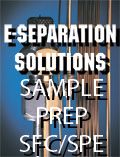Environmental Testing Market
The environmental market had seen its share of milestones with roots dating back to the 1950s with the Air Pollution Act, followed by the Clean Air Act of 1963. Throughout the next half-century, the Clean Air Act has seen various revisions and additions.
The environmental market had seen its share of milestones with roots dating back to the 1950s with the Air Pollution Act, followed by the Clean Air Act of 1963. Throughout the next half-century, the Clean Air Act has seen various revisions and additions. However, it wasn’t until 1990 when congress passed the Clean Air Act Amendments, which addressed the environmental concerns in several folds, including Air Pollution and Prevention, emission standards for moving sources, acid deposition controls, permits, ozone protection, and various other controls. As a result, the analytical instruments market received a boost in new instrument sales, particularly in gas chromatography, GC–MS, LC, LC–MS, and atomic absorption.

2008 Environmental Testing Instrumentation Market
Currently, the environmental instrument market is nearing $4 billion with signs of solid growth. President Obama’s American Recovery and Reinvestment Act (ARRA) was signed into law on February 17, 2009. Among many other sectors, the ARRA provides stimulus money for the NIH, NSF, DOE, USDA, NIST, various institutes such as National Cancer Institute (NCI), National Heart, Lung and Blood Institute, and the National Institute of Allergy and Infectious Diseases.
Through the EPA, the stimulus provided $4 billion in grant money for Clean Water State Revolving Funds and $2 billion for capitalization grants for the Safe Drinking Water Act. The Department of the Interior’s Bureau of Reclamation was allocated $126 million for water reuse and reclamation projects, and at least $60 million for rural water projects. The USDA’s Rural Utilities Services received $2.82 billion for loans and $986 million for grants to rural water and waste disposal facilities.
Instruments for water quality testing are expected to benefit from the ARRA. Laboratory separations, which include HPLC, GC, LC–MS, and GC–MS accounted for nearly a third of the 2008 environmental instrumentation market. Atomic spectroscopy, which includes atomic absorption among other techniques, accounted for only 16% of the share, while the remaining 54% of the environmental instrumentation market included technologies such as electrochemistry, water analyzers, gas analyzers, and molecular spectroscopy.
The foregoing data was extracted and adapted from SDi’s recently published report, Environmental Analysis: A Global Renaissance of Opportunities. For more information, contact Glenn Cudiamat, VP of Research Services, Strategic Directions International, Inc., 6242 Westchester Parkway, Suite 100, Los Angeles, CA 90045, tel. (310) 641-4982, fax (310) 641-8851, e-mail:cudiamat@strategic-directions.com
Regulatory Deadlines and Supply Chain Challenges Take Center Stage in Nitrosamine Discussion
April 10th 2025During an LCGC International peer exchange, Aloka Srinivasan, Mayank Bhanti, and Amber Burch discussed the regulatory deadlines and supply chain challenges that come with nitrosamine analysis.
Top Execs from Agilent, Waters, and Bruker Take the Stage at J.P. Morgan Healthcare Conference
January 16th 2025The 43rd Annual Healthcare J.P. Morgan Healthcare Conference kicked off in San Francisco earlier this week. Here’s what top executives from Agilent, Bruker, and Waters, discussed during the event.

.png&w=3840&q=75)

.png&w=3840&q=75)



.png&w=3840&q=75)



.png&w=3840&q=75)



